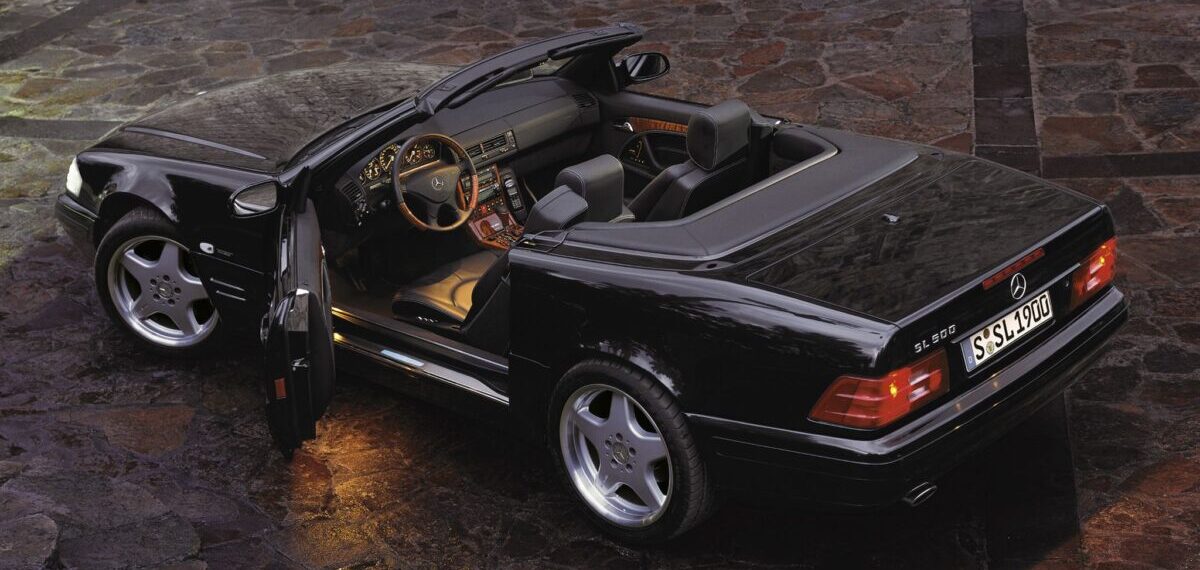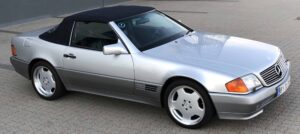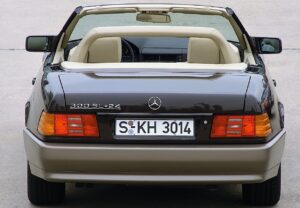Mercedes R129 SL a timeless icon of design and innovation
1. The Mercedes R129 SL: A triumph of design and engineering
2. The R129’s design evolution
3. A new direction: Modern design meets practicality
4. Technological innovations: Safety and efficiency
6. A car that stands the test of time
The Mercedes R129 SL: A triumph of design and engineering
The Mercedes-Benz R129 SL is a sports car that redefined luxury and performance in the early 1990s. Renowned for its stunning design and groundbreaking technology, the R129 quickly became an icon in the automotive world. With its blend of timeless elegance and modern engineering, it remains one of the most admired luxury convertibles of all time.
The R129’s design evolution
The design of the R129 SL was led by Bruno Sacco, the chief designer at Mercedes-Benz, who took over the position in the mid-1970s. Sacco was tasked with creating a car that was both an immediate hit and one that could remain relevant and appealing for years, if not decades. This was no easy task, as the car needed to stand out in the luxury sports car market, which was as much about emotion as it was about performance.
At first, the design efforts for the R129 were conservative, with early sketches resembling the company’s previous models, such as the R107. The initial prototypes, developed in the 1970s, were fairly uninspired and stayed within the established design language. Sacco’s vision was limited by a desire to maintain the brand’s traditional look, which, while elegant, held the car back from true innovation.
However, the R129’s development faced multiple delays, largely due to external factors like the energy crisis of the 1970s and internal shifts within Mercedes-Benz’s focus on other projects. These delays ultimately proved beneficial, as they gave Sacco and his team the time needed to rethink the design in a more forward-thinking way.
A new direction: Modern design meets practicality
By the time the 1980s rolled around, the automotive world had matured, and design trends had shifted toward sharper, more angular lines and better aerodynamics. Sacco and his team embraced this new direction, incorporating modern styling elements into the R129’s design.
One of the key design features that set the R129 apart was its Targa-style roof. This innovative roof design allowed the car to meet safety regulations in the United States, where concerns over open-top cars were mounting. The Targa roof not only provided better structural integrity but also contributed to the car’s clean, sleek appearance.
Beyond the roof, the R129 featured bold, sharp lines and smooth curves that marked a significant departure from its predecessor, the R107. The rear of the car was designed with a “Kamm tail” that helped improve aerodynamics while also giving the car a unique and distinctive look. This careful attention to design details helped the R129 stand out as both a luxury vehicle and a performance machine.
Technological innovations: Safety and efficiency
While the R129 was undeniably beautiful, its true brilliance lay in its innovative engineering. The car was one of the first to use computer-aided design (CAD), which allowed Mercedes-Benz engineers to create a lighter, stronger body that improved fuel efficiency, reduced wind noise, and enhanced safety. The use of CAD helped refine the car’s structure while keeping its weight to a minimum.
A key safety feature introduced with the R129 was the automatic roll-over bar. This system was designed to protect the occupants in the event of a rollover, a crucial feature for a car that was designed to be driven with the top down. This innovation, along with other safety features like reinforced side-impact protection, made the R129 one of the safest convertibles of its time.
Aerodynamic excellence
Aerodynamics played a significant role in the design of the R129. The body of the car was sculpted to reduce drag and improve efficiency. The Kamm tail design, which featured soft curves tapering from front to back, not only contributed to the car’s visual appeal but also improved its aerodynamic performance.
The R129 also benefited from a number of subtle but important design elements, such as ribbed rear lights and chrome trim. These touches helped to keep the car’s bodywork clean and free from debris while maintaining its stylish appearance. The rear light units, in particular, were designed to help reduce drag while also enhancing the car’s overall look.
A car that stands the test of time
The Mercedes-Benz R129 SL was more than just a car—it was a symbol of luxury, performance, and innovation. Despite its larger dimensions compared to the R107, it retained the classic Mercedes-Benz elegance. The car’s improved aerodynamics not only made it more fuel-efficient but also reduced wind noise, providing a smoother and more refined driving experience.
The R129’s safety features, such as the roll-over bar and advanced CAD-engineered body, ensured that it was not only stylish but also practical. The car’s design has aged gracefully, and it remains a favorite among collectors and enthusiasts today.
Are you already a proud owner of a Mercedes R129? If so, check out our selection of parts for this car at the following link:
Photos sources: autoevolution.com, klassikermarkedet.dk, pinterest.com









